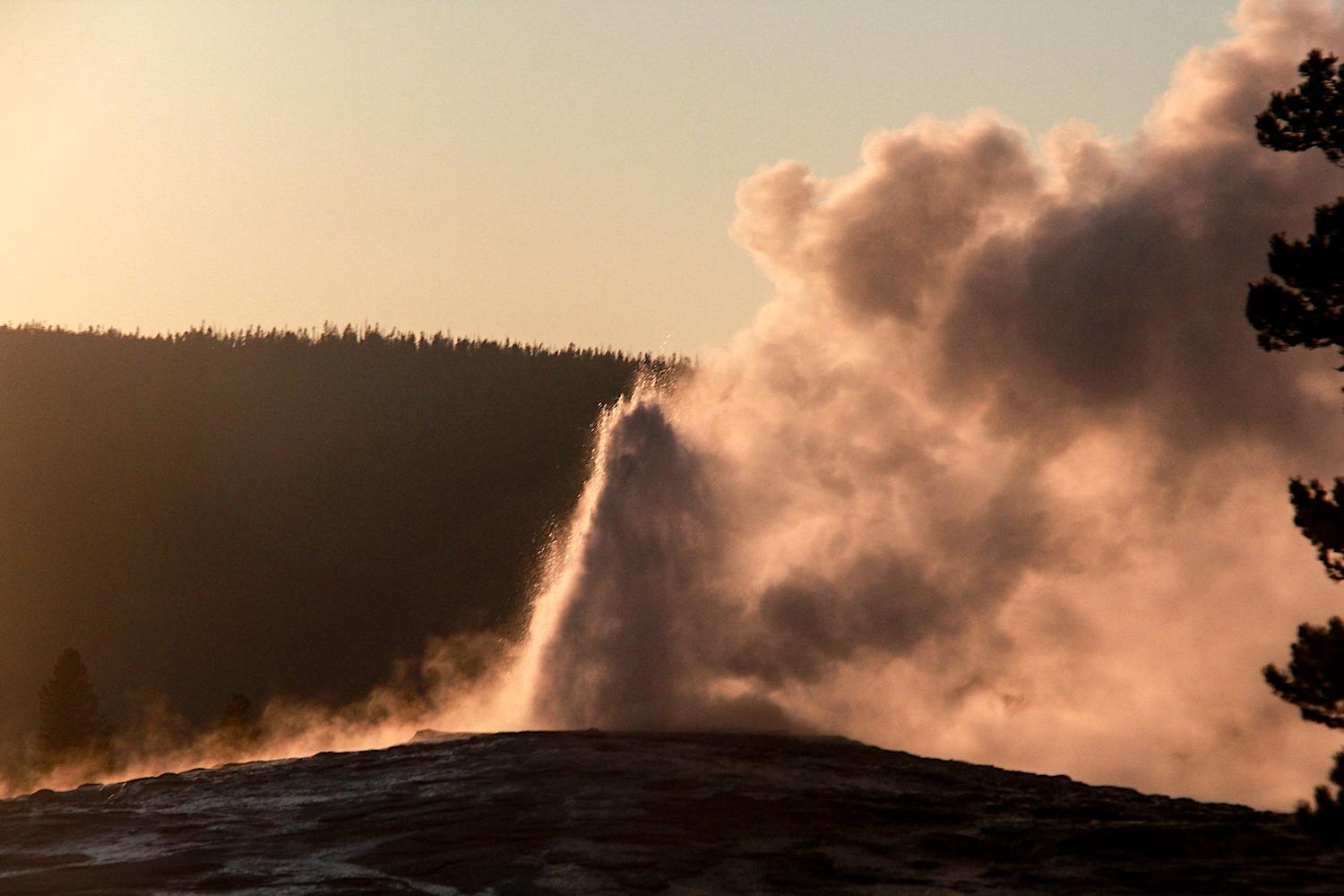
Can artificial intelligence safely create a travel itinerary for Yellowstone National Park?/Robert Pahre
Your Artificial Travel Agent For A Yellowstone Vacation
By Robert Pahre
As a professor, I am on one of the many frontlines in the world of artificial intelligence (AI). Students in my classes have submitted AI-written essays that invent facts about some of your favorite national parks. Those “hallucinations” help me identify cheaters.
Those essays got me thinking, however. Would AI serve as a good travel agent for readers of the National Parks Traveler? Because Yellowstone is the world’s most-famous national park, and the park I happen to know best, I decided to ask ChatGPT to design an itinerary for a one-week trip to Yellowstone. That’s a long visit for most people, so it would challenge AI to think beyond what visitors do over a day or two—the most common visit. As we’ll see, it struggled a bit.
I asked for a one-week vacation in July, flying from Chicago to Yellowstone. I requested specific recommendations about daily activities and places to stay. I also asked for restaurant recommendations. Having worked with ChatGPT for a while now, I know that being specific is important.
As I expected, AI gave me a conventional tour of the park. Conceptually, it used the classic figure-8 itinerary that dates to the stagecoach era. Unlike the stagecoaches, however, it began and ended with West Yellowstone instead of Gardiner. Here is an overview:
Day 1. Fly to Bozeman, rent a car, and drive to West Yellowstone.
Day 2. Lower Loop Tour, with an early start.
Day 3. Grand Canyon of the Yellowstone.
Day 4. Mammoth Hot Springs and Gardiner.
Day 5. Wildlife and Scenic Drives.
Day 6. Norris Geyser Basin and the Madison Area.
Day 7. Return to Bozeman and fly back to Chicago.
The itinerary starts well. West Yellowstone would give us a chance to rest after the flight. If we experience any travel difficulties, we won’t miss anything inside the park. ChatGPT recommended two restaurants. Though they were perfectly reasonable selections, it left out both my favorite restaurant and my favorite pizza place in West.
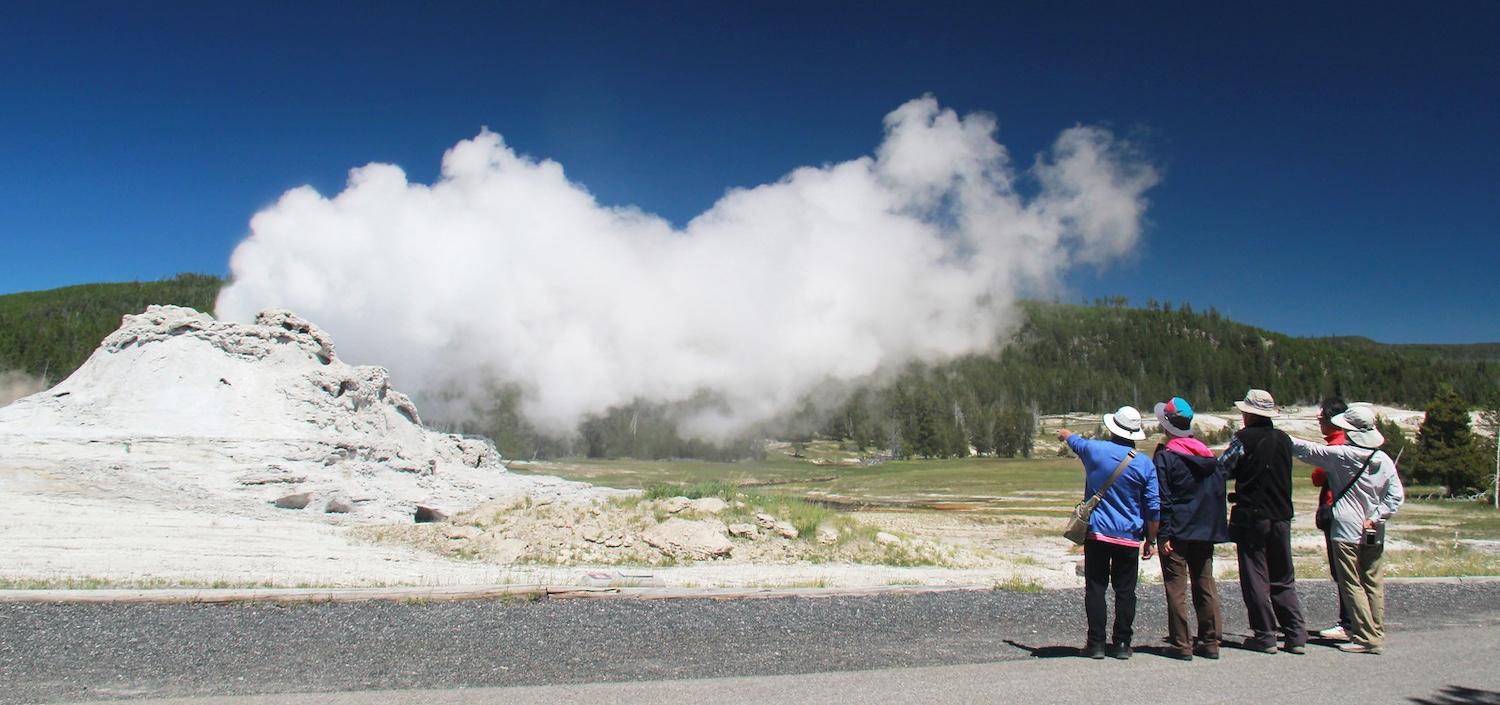
Geyser gazing in Yellowstone/Robert Pahre
The second day is too ambitious. ChatGPT recommended driving to Old Faithful and the Upper Geyser Basin from West Yellowstone, with lunch at the Old Faithful Inn. I can’t object to that, especially since it recommended an early start. Then our AI travel agent told us to drive on to West Thumb, Yellowstone Lake, and the Hayden Valley. We would backtrack to spend the night at Lake. This would have us spending a July afternoon in the Hayden Valley wildlife jam.
Instead of that itinerary, I would suggest that you stop at Lake. My plan would give you time to explore the Upper Basin and West Thumb, with at least two viewings of Old Faithful and decent odds of seeing one of the other major features erupt. You could then see Hayden Valley the next morning when more animals and fewer vehicles will be out. These are the kinds of nuances that AI seems not to know.
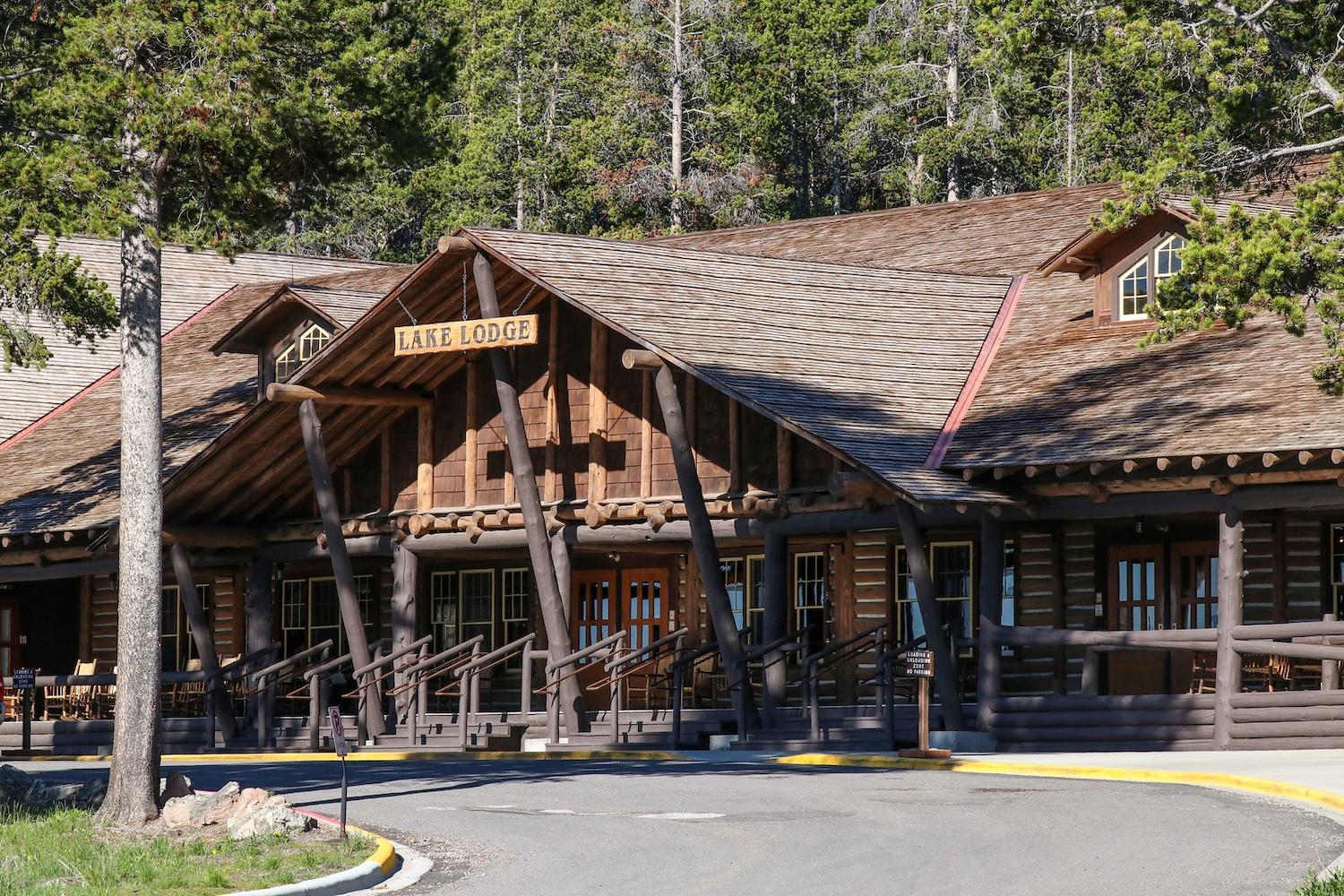
Lake Lodge in Yellowstone/Robert Pahre
The itinerary for Day 3 features the Grand Canyon of the Yellowstone, with a hike along the South Rim Trail and lunch at Canyon Village. It recommends optional trips to Norris Basin or the Lamar Valley, though I would skip those because they appear again on the itineraries for Days 5-6. This is otherwise a good plan, allowing for tired visitors to have some down time. Energetic people can explore the trails in the Canyon Area, the nearby lakes, or Mount Washburn.
On Day 4, our artificial guide recommends visiting Mammoth Hot Springs before spending the night in Gardiner. It recommends exploring not only Mammoth Hot Springs but visiting the Albright Visitor Center, which has a small museum. I like that. It also suggests a scenic drive along the Yellowstone River downstream from Gardiner, a choice I did not expect but will endorse. I like its restaurant recommendations in Gardiner more than I did those in West.
That said, I found it interesting that ChatGPT did not recommend staying at the Mammoth Hot Springs Hotel. Perhaps AI prefers the air conditioning in the Gardiner hotels; the physical machines behind cloud computing do need a lot of cooling.
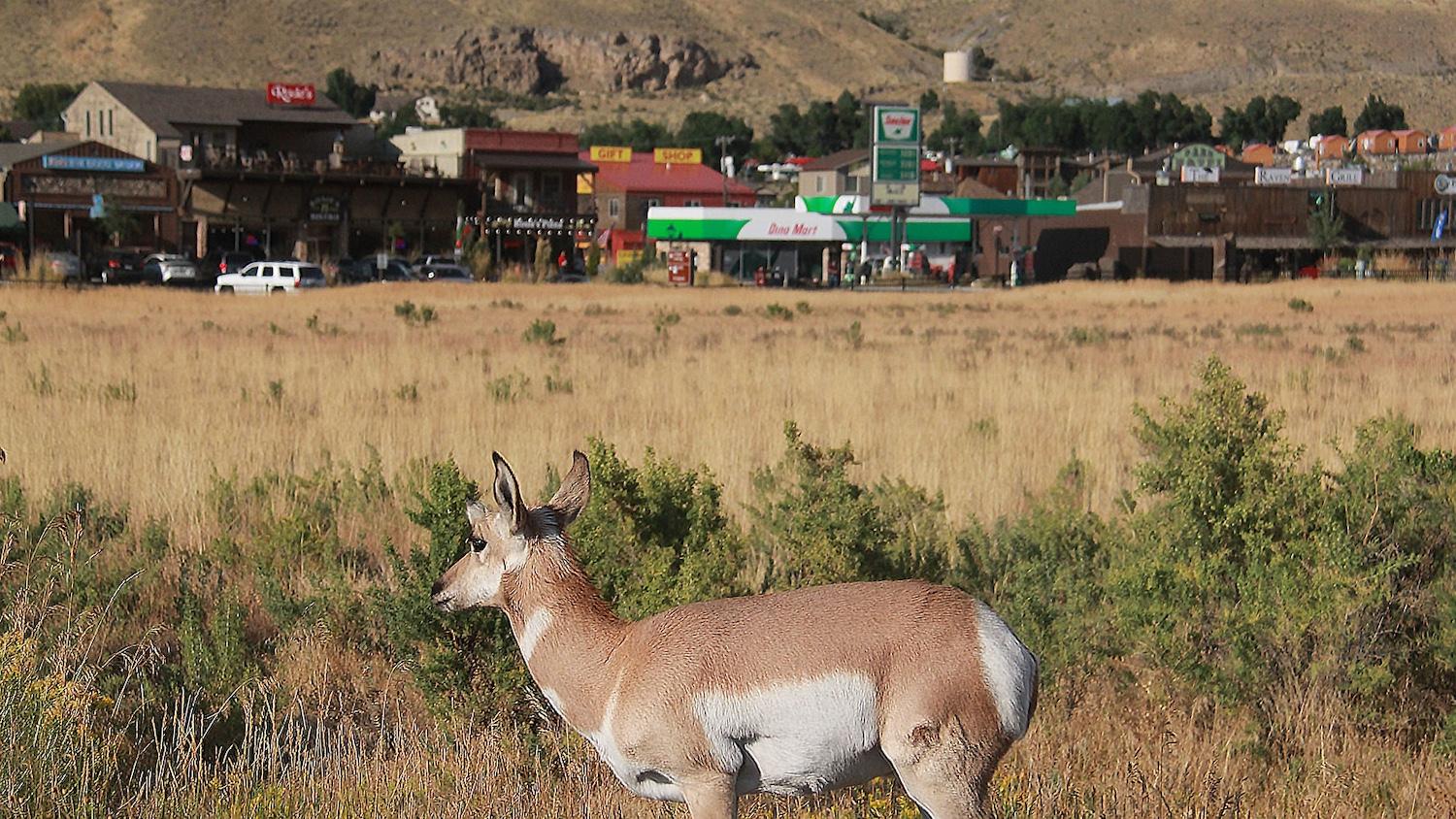
A pronghorn bypassing Gardiner, Montana/Robert Pahre
On Day 5, ChatGPT gives us a hot mess. I won’t criticize it in detail, but you should grab a map of the park and check out all the backtracking here. If you like the basic idea of this day, I recommend breakfast *before* you go to the Lamar Valley.
- Start the day with an early morning wildlife viewing excursion in Lamar Valley, known as America's Serengeti for its abundance of wildlife.
- Have breakfast at a local diner in Gardiner.
- Drive south through the park, stopping at scenic viewpoints along the way.
- Visit the Petrified Tree and Tower Fall areas.
- Have lunch at Roosevelt Lodge.
- Continue south to the Norris Geyser Basin area.
- Stay overnight in the Norris area.
The only overnight lodging at Norris is a campground. The park has decided to close it for the 2024 season. Because the ChatGPT corpus only goes to late 2022, I wouldn’t expect AI to know about the closure. Day 5 gives us an important reminder: double-check the information that AI gives you!
Day 6 features Norris Geyser Basin and the Madison River area, with lodging in the Madison area. The activities are fine but the lodging recommendation is dubious for someone flying from Chicago. The only option at Madison is a campground, though at least this one is open. However, ChatGPT doesn’t know that if you are taking an airplane from Chicago you will probably not be bringing tents and sleeping bags—and your carry-on bag does not have room for an RV.
You might have noticed that the itinerary started to fall apart after three days. Apparently, the corpus of texts that AI uses leans toward shorter vacations of up to three days. Still, if you like the idea behind the figure-8 trip, I recommend the following changes. Spend the night on Day 4 at Roosevelt, after spending most of the day in the Lamar Valley. Visit Tower Falls and Petrified Tree. After that, you will spend your fifth night in Gardiner, with Day 6 consisting of a drive to West Yellowstone. Human advice can help you fine-tune the AI advice.
On Day 7, ChatGPT and I agree. Spend some time in West Yellowstone before driving back to Bozeman’s Yellowstone International Airport.
All in all, our artificial travel agent gave us a reasonable but conventional tour. It assumes that we would be staying on pavement and boardwalks. That’s a reasonable assumption for short visits. However, people spending a week might want to include some day hikes for a taste of the backcountry. Other people might want to go on a guided horseback trip, go mountain biking where allowed, or go fly-fishing. Our artificial travel guide didn’t consider any of those outings.
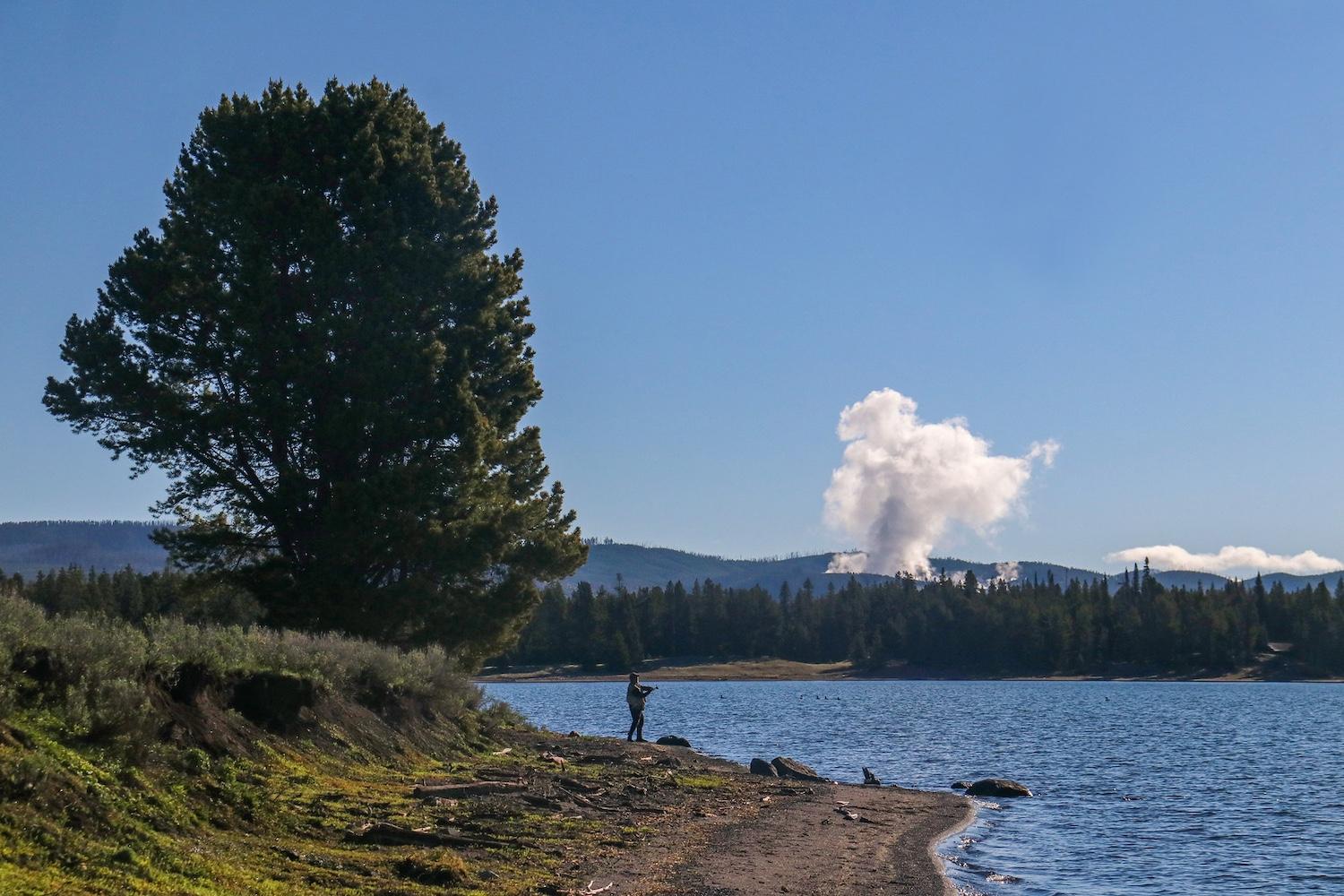
Fishing in Lake Yellowstone/Robert Pahre
After experimenting with a general itinerary, I decided to push my artificial travel agent to develop an itinerary off the beaten track. I asked for an adventure travel vacation with a set of specific things I wanted to do. I asked to start on either April Fool’s Day or May 15, taking as much time as I would need. ChatGPT wisely had me start on May 15, though it really should have recommended a later date to accommodate backcountry regulations and weather challenges.
Chat GPT gave me an itinerary with all the things I wanted to do, which are mostly illegal, out of season, or not practical. Here they are, with my comments.
- Begin by chartering a plane and pilot for an air tour of the park. This is not possible in the way that people expect in Grand Canyon and some other parks. In Yellowstone, all aircraft must remain at least 2,000 feet above the park, so the advertised air tours stay outside the park boundaries. AI put it on my itinerary anyway.
- Go whitewater rafting inside the park. This is not allowed, though you can raft outside the park later in the season. When I pressed ChatGPT for details, it gave me several specific rivers. When I asked if it was possible to raft from Yellowstone Lake all the way to Gardiner, it said that I could do this. To my surprise, it told me the route included "passing through the Upper and Lower Falls of the Yellowstone River.” Attempting this will kill you.
- Go backpacking along the east shore of Yellowstone Lake, setting aside one day to climb Turret Mountain. My artificial travel agent happily added this to the trip. It seems unconcerned with the mileage, making every trip an overnight out-and-back. Those overnights would range from 12 to 75 miles in length. This plan also runs afoul of the trail closure dates south of Park Point. In May, only that 12-mile trip is allowed. In addition, Turret Mountain is a very difficult climb—its first ascent was made by three Exum climbing guides in 2001. When pressed, AI suggested specific campsites to access the mountain, three of which would work. It also suggested a specific route, which climbers had tried unsuccessfully before the successful climb in 2001. AI doesn’t know that climbing Turret Mountain is impossible for anyone who is not a high-end professional mountaineering guide, nor does it know about the dates when these backcountry sites are open.
- Spend a day fishing near a backcountry campsite so that I can cook trout over a campfire. AI was happy to oblige but did not recommend a specific site. I wanted to see if it knew that you must keep all (non-native) lake trout you catch but you must release all other trout. When I pressed it for more details, it recommended three groups of campsites. It told me that I could catch cutthroat trout at all those sites, and that I could cook them while enjoying nature. Enjoying nature is always allowed but keeping the cutthroat trout I caught would not be legal.
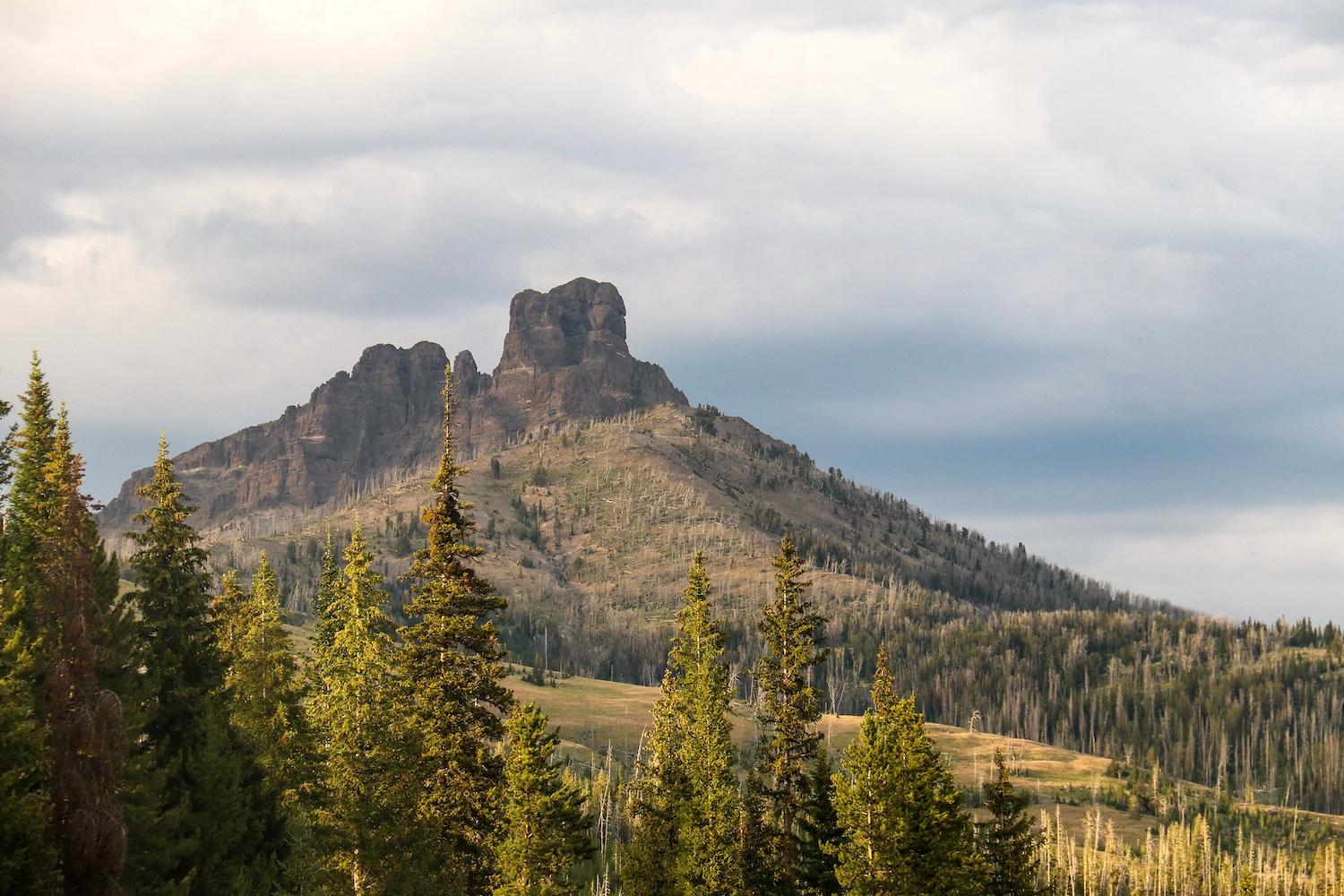
Turret Mountain/Robert Pahre
- Bathe in the waters of a hot spring. This is illegal and dangerous. I wanted to know if AI would suggest soaking in one of the run-off channels where this is allowed. It did not do so, but it did suggest bathing in the hot springs at West Thumb. This is most assuredly not recommended. No matter how quickly the other visitors fetched help, I doubt the rangers would be able to save your life. When I pressed our artificial friend for specific sites, it suggested four locations. Two of those sites do have places where run-off mixes with river water, making bathing legal; it would be illegal in the two other places. AI also suggested a fifth location, telling me that I could get a hot shower at the Norris campground. That’s not what I had in mind.
- Dayhike the length of Specimen Ridge. You can do this, but there are two challenges that AI didn’t mention. First, you need two cars because it’s 19 miles one-way. Second, you must ford the Lamar River on the eastern end of the hike. The water will be too high to ford in May, so this is not feasible for the dates I asked about. In any season, it would be prudent to start at the east side so that cross the ford at the start of the day. If you start at the west end, you risk being stranded at the end of a long day. As we have seen several times, AI does not think about how many miles a human can reasonably hike in a day, nor does it consider obstacles like fording streams and rivers. I would be willing to bet that it doesn’t know about mosquitoes.
- Go SCUBA diving in Yellowstone Lake, preferably in West Thumb or Mary Bay to see the underwater thermal features. This is possible, with a guide strongly recommended. AI got this one right, including the guide recommendation. It might have suggested some additional locations, which you can find on the park website.
- Go waterskiing. This is illegal. So are jet skis and similar watercraft. When I pressed my artificial travel agent about specific sites, it named two lakes that allow motorized boating and one lake that does not. It also recommended waterskiing down the Madison River, which would certainly attract a lot of attention pretty quickly.
- Visit “No-Name” Basin. I am not naming this destination here, but it’s a remote off-trail thermal basin that you can only reach on a multi-day trip. I have not been there, but trail reports recommend bringing rope to reach it. ChatGPT suggested a day hike.
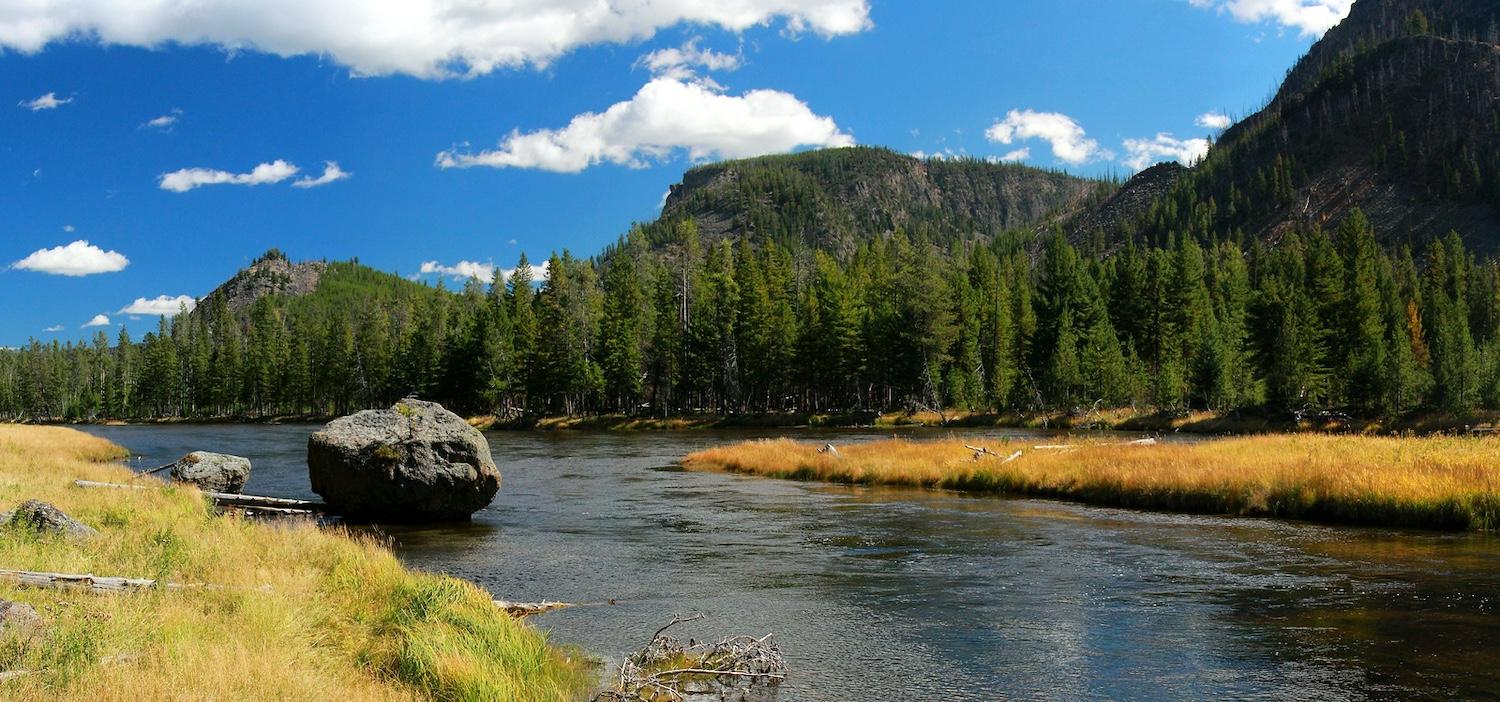
Not a good choice for waterskiing, Madison River/Robert Pahre
What do we learn from the exercise? Artificial intelligence provides a reasonable first draft if you want ideas for a driving-based vacation. If you’d like to hike, bike, ride a horse, or go fishing, it will not volunteer information. You can ask it about those options, but its answers may not be accurate. It seems to know little about fishing regulations, for example.
If you are looking for uncommon activities, AI seems to give terrible advice. Even when I pressed it for details, its answers were untrustworthy. Some answers improved but ChatGPT doubled down on some falsehoods. In the case of air tours, it seems to be misled by online advertising copy in its corpus of texts. They often leave the impression you will fly over the park instead of looking into the park from airspace outside of it.
For both the standard tour and the adventure tour, AI tried to give me exactly what I asked for. A knowledgeable human would have tried to adjust my expectations. For example, a person would tell me to do some things after July 15, or to try rafting outside the park boundaries. A human would also ask me some questions first: Do you like horses? How far would you like to hike in a day? Do you like pizza or a fancy dinner?
If you just want to see the major sites while spending a day or two in the park, however, AI can get you started on your planning. Like GPS navigation that will sometimes tell you to drive into a lake, be careful not rely on it.

Comments
I have been asking ChatGPT and Microsoft's CoPilot to tell me jokes about different national parks. Interestingly, CoPilot tells better jokes about than ChatGPT about the national parks.
Thanks, Martin. That's especially interesting since Microsoft is behind both companies.
I have asked ChatGPT to tell jokes about some historical events. Let's just say that the corpus on the Civil War is much larger than the corpus on the War of Jenkins' Ear.